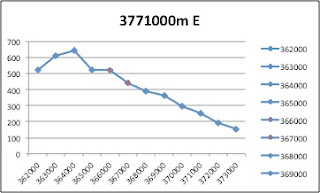Randy's GEOG 7
Tuesday, May 29, 2012
Lab #7: Census 2000/2010
Tuesday, May 15, 2012
Lab #6: DEMs in ArcGIS
Lab #5: Projections in ArcGIS
Planar Distances from Washington, D.C. and Kabul, Afghanistan via Conformal, Equal Area, and Equidistant Map Projections
Tuesday, May 8, 2012
Lab #4: Introducing ArcMap
Tuesday, April 17, 2012
Map of Historical and Influencial Protests in Los Angeles
View Places of Protests in LA in a larger map
Sunday, April 15, 2012
Lab 2
Randy Mai
UID: 203689788
April 10, 2012
Geography 7
LAB 2
1. What is the name of the quadrangle?
Beverly Hills Quadrangle
2. What are the names of the adjacent quadrangles?
Canoga Park, Van Nuys, Burbank, Topanga, Hollywood, Venice, & Inglewood
3. What was the quadrangle first created?
1995
4. What datum was used to create your map?
North American Datum of 1927 (NAD 27), North American Datum of 1983 (NAD 83), & National Geodetic Vertical Datum of 1929
5. What is the scale of the map?
1: 24,000
6. At the above scale, answer the following:
a. 5 centimeters on the map is equivalent to how many meters on the ground?
5 cm on map = 1200 m on ground
b. 5 inches on the map is equivalent to how many miles on the ground?
5 inches on map = ~1.894 miles on ground
c. One mile on the ground is equivalent to how many inches on the map?
1 mile ground= ~2.64 inches on the map
d. Three kilometers on the ground is equivalent to how many centimeters on the map?
3 km on ground = 12.5 cm on map
7. What is the contour interval on your map?
20 feet
8. What are the approximate geographic coordinates in both degrees/minutes/seconds and decimal degrees of:
a. The Public Affairs Building
Latitude: 34°4’22”
Longitude: 118°26’15”
b. The tip of Santa Monica Pier
Latitude: 34°0’8”
Longitude: 118°30’
c. The Upper Franklin Canyon Reservoir
Latitude: 34°6’15”
Longitude: 118°24’41”
9. What is the approximate elevation in both feet and meters of:
a. Greystone Mansion (in Greystone Park)
560 ft or 170. 688 mi elevation
b. Woodlawn Cemetery
140 ft or 42.672 mi elevation
c. Crestwood Hills Park
780 ft or 237.744 mi elevation
10. What is the UTM zone of the map?
Zone 11
11. What are the UTM coordinates for the lower left corner of your map?
UTM northing: 3763000m N.
UTM easting: 361000m E.
12.How many square meters are contained within each cell (square) of the UTM gridlines?
1000 m2 contained within each cell
13.Obtain elevation measurements, from west to east along the UTM northing 3771000, where the eastings of the UTM grid intersect the northing. Create an elevation profile using these measurements in Excel (hint: create a line chart). Figure out how to label the elevation values to the two measurements on campus. Insert your elevation profile as a graphic in your blog.

1. What is the magnetic declination of the map?
14° East
2. In which direction does water flow in the intermittent stream between the 405 freeway and Stone Canyon Reservoir?
From north to south
3. Crop out (i.e., cut out and paste) UCLA from the map and include it as a graphic on your blog.











